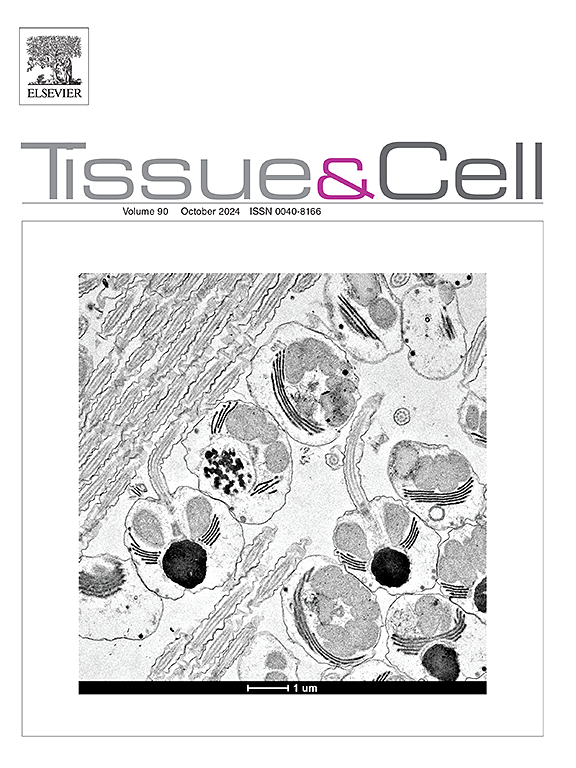Melamine-induced adrenal structural and functional alterations and the contribution of morin to the adrenal repair in Wistar rats
IF 2.7
4区 生物学
Q1 ANATOMY & MORPHOLOGY
引用次数: 0
Abstract
Melamine is a prevalent environmental toxicant associated with well-established toxicity on several organs. The adrenal gland is a highly dynamic organ that makes it susceptible to chemicals’ toxicity. The current work investigated the adrenal histo-biochemical alterations caused by melamine exposure in rats and explored whether morin has protective potential against such adrenal toxicity. The experiment utilized 32 adult male Wistar rats randomly divided into control, morin, melamine, and melamine/morin groups. Adrenal toxicity was induced by melamine (126 mg/kg/d). Morin was used in a dose of 50 mg/kg/d. All treatments were given via oral gavage for 4 weeks. The adrenal oxidative stress markers, serum corticosterone (CORT), adrenocorticotrophic hormone (ACTH), and the mRNA expression of the steroidogenic genes; StAR (Steroidogenic acute regulatory protein), P450scc (Cholesterol side-chain cleavage enzyme), and11β-HSD1 (11β-Hydroxysteroid dehydrogenase type 1) were evaluated. Also, histological and immunohistochemical examinations of the paraffin-processed adrenal sections were performed. Melamine decreased adrenal tissue superoxide dismutase (SOD) and catalase (CAT) activities, increased adrenal malondialdehyde (MDA) levels, decreased serum CORT and increased ACTH levels, and suppressed the adrenal cortical expression of genes involved in steroidogenesis. Moreover, the inducible nitric oxide synthase (iNOS) and cysteine-aspartic acid protease-3 (caspase-3) expression were upregulated as indicated by quantitative real-time reverse transcription-polymerase chain reaction (qRT-PCR) and immunohistochemistry. Besides, melamine caused remarkable adrenal histopathological changes. However, morin administration greatly repaired the adrenal injury and restored the adrenal function. Morin maintained the adrenal histoarchitecture and protected against melamine-provoked adrenal toxicity by downregulating the inflammation and the adrenal apoptotic processes and relieving the oxidative stress burden.
求助全文
约1分钟内获得全文
求助全文
来源期刊

Tissue & cell
医学-解剖学与形态学
CiteScore
3.90
自引率
0.00%
发文量
234
期刊介绍:
Tissue and Cell is devoted to original research on the organization of cells, subcellular and extracellular components at all levels, including the grouping and interrelations of cells in tissues and organs. The journal encourages submission of ultrastructural studies that provide novel insights into structure, function and physiology of cells and tissues, in health and disease. Bioengineering and stem cells studies focused on the description of morphological and/or histological data are also welcomed.
Studies investigating the effect of compounds and/or substances on structure of cells and tissues are generally outside the scope of this journal. For consideration, studies should contain a clear rationale on the use of (a) given substance(s), have a compelling morphological and structural focus and present novel incremental findings from previous literature.
 求助内容:
求助内容: 应助结果提醒方式:
应助结果提醒方式:


